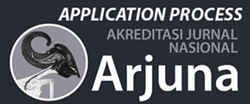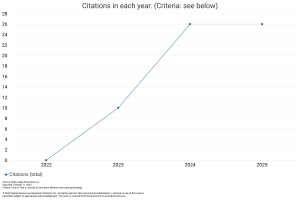Analysis of Bullying’ Perpetrators and Victims in Middle Schools in Banjarbaru City, South Kalimantan
DOI:
https://doi.org/10.59653/jemls.v2i01.457Keywords:
evaluation, bullying, kirkpatrick, middle school, rootsAbstract
This research is an evaluation of the Indonesian roots program using the Kirkpatrick evaluation model which focuses on evaluating bullying behavior carried out by students in previous years, and victims of bullying at school. The data analysis used is quantitative descriptive. The data obtained from the results of implementing the questionnaire is quantitative data. The results of the study showed that 5 students (36%) had never bullied at school in the previous year's bullying behavior at school. Meanwhile, 9 students (64%) had carried out bullying with a relatively low frequency. Victims of bullying in the previous year reached 64% consisting of 4 male students and 5 female students. The recommendations of this research are: 1) schools should be proactive by creating programs for teaching social skills, problem solving, conflict management and character education. 2) Teachers should monitor changes in students' attitudes and behavior inside and outside the classroom; and there needs to be harmonious cooperation between guidance and counseling teachers, subject teachers, as well as school staff and employees. 3) Parents should collaborate with the school to achieve maximum educational goals without bullying between students at school.
Downloads
References
Ahmed, I., Qazi, T. F., Jabeen, S., & Punjab, P. (2011). Self-Efficacy: The Predictor of Educational Performance among University Students. In Information Management and Business Review (Vol. 3, Issue 2).
Akman, Y. (2021). The Relationship between School Climate and Students’ Aggressive Behaviors. International Journal of Progressive Education, 17, 2021. https://doi.org/10.29329/ijpe.2020.332.26
Coelho, V. A., & Sousa, V. (2020). Bullying and Cyberbullying Behaviors Questionnaire: Validation of a short form. International Journal of School and Educational Psychology, 8(1), 3–10. https://doi.org/10.1080/21683603.2018.1522282
Darling-Hammond, L., & Cook-Harvey, C. M. (2018). Educating the Whole Child: Improving School Climate to Support Student Success. Learning Plolicy Institute. https://learningpolicyinstitute.org/product/educating-whole-child.
Fathona Handayani, N. (2019). I CARE Training to Increase the Self-Efficacy and Prosocial Behavior of Students Observers of Bullying.
Fitrawan, M. R. (2018). Kecam Kekerasan Anak di Banjarbaru yang Viral di Medsos, Dewan: Stop Bullying Artikel ini telah tayang di Apahabar.com Banjarmasin dengan judul: Kecam Kekerasan Anak di Banjarbaru yang Viral di Medsos, Dewan: Stop Bullying. Apahabarbanjarmasin. https://banjarmasin.apahabar.com/post/kecam-kekerasan-anak-di-banjarbaru-yang-viral-di-medsos-dewan-stop-bullying-l798r30e
Gomez‐baya, D., Garcia‐moro, F. J., Nicoletti, J. A., & Lago‐urbano, R. (2022). A Cross‐National Analysis of the Effects by Bullying and School Exclusion on Subjective Happiness in 10‐Year‐Old Children. Children, 9(2). https://doi.org/10.3390/children9020287
Jennings, W. G., Song, H., Kim, J., Fenimore, D. M., & Piquero, A. R. (2019). An Examination of Bullying and Physical Health Problems in Adolescence among South Korean Youth. Journal of Child and Family Studies, 28(9), 2510–2521. https://doi.org/10.1007/s10826-017-0885-3
Jung, Y. A. (2018). What Makes Bullying Happen in School? Reviewing Contextual CharacteristicsSurrounding Individual and Intervention Programson Bullying. Elementary Education Online, 17(1), 1–6. http://ilkogretim-online.org.tr
Mohan, T. A. M., & Bakar, A. Y. A. (2021). A systematic literature review on the effects of bullying at school. SCHOULID: Indonesian Journal of School Counseling, 6(1), 35. https://doi.org/10.23916/08747011
Montero-Carretero, C., Pastor, D., Santos-Rosa, F. J., & Cervelló, E. (2021). School Climate, Moral Disengagement and, Empathy as Predictors of Bullying in Adolescents. Frontiers in Psychology, 12. https://doi.org/10.3389/fpsyg.2021.656775
Qiu, H. (2021). Explore the Factors of School Bullying from the Ecosystem Theory. OALib, 08(12), 1–10. https://doi.org/10.4236/oalib.1108165
Saleem Khan, A., & Khalid, S. (2020). Saleem Khan Self-Efficacy Practicability in Students’ Scholastic Performance Ilkogretim Online-Elementary Education Online. Year, 19(4), 4588–4599. https://doi.org/10.17051/ilkonline.2020.04.764865
Thornberg, R., Wänström, L., & Jungert, T. (2018). Authoritative classroom climate and its relations to bullying victimization and bystander behaviors. School Psychology International, 39(6), 663–680. https://doi.org/10.1177/0143034318809762
Wang, C., Ryoo, J. H., Swearer, S. M., Turner, R., & Goldberg, T. S. (2017). Longitudinal Relationships between Bullying and Moral Disengagement among Adolescents. Journal of Youth and Adolescence, 46(6), 1304–1317. https://doi.org/10.1007/s10964-016-0577-0
Waters, S., & Mashburn, N. (2017). An Investigation of Middle School Teachers’ Perceptions on Bullying. Www.Jsser.Org Journal of Social Studies Education Research Sosyal Bilgiler Eğitimi Araştırmaları Dergisi, 2017(1), 1–34. www.jsser.org
Downloads
Published
How to Cite
Issue
Section
License
Copyright (c) 2023 Ali Rachman, Akhmad Sugianto, Renandra Prayudy, M. Rico Ramadhan

This work is licensed under a Creative Commons Attribution-ShareAlike 4.0 International License.
Authors who publish with this journal agree to the following terms:
- Authors retain copyright and grant the journal right of first publication with the work simultaneously licensed under a Creative Commons Attribution-ShareAlike that allows others to share the work with an acknowledgement of the work's authorship and initial publication in this journal.
- Authors are able to enter into separate, additional contractual arrangements for the non-exclusive distribution of the journal's published version of the work (e.g., post it to an institutional repository or publish it in a book), with an acknowledgement of its initial publication in this journal.
- Authors are permitted and encouraged to post their work online (e.g., in institutional repositories or on their website) prior to and during the submission process, as it can lead to productive exchanges, as well as earlier and greater citation of published work (See The Effect of Open Access).
























